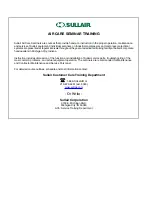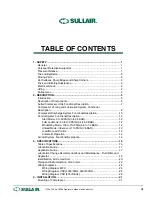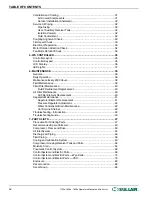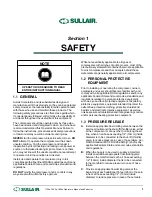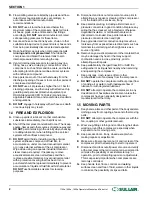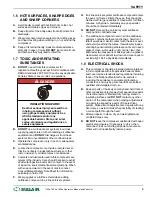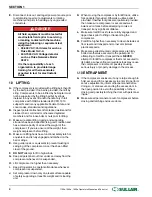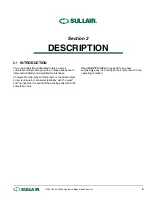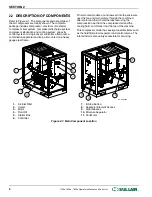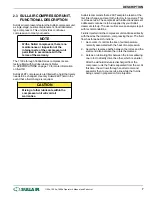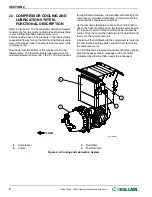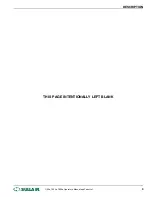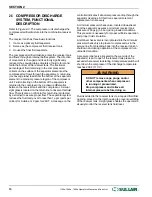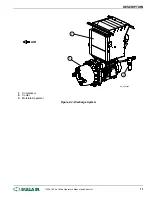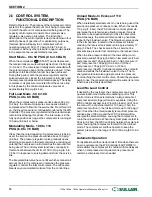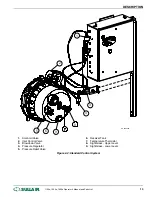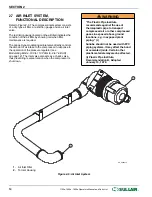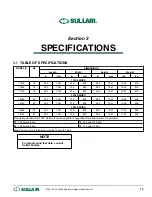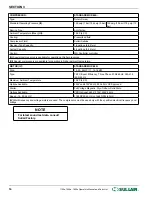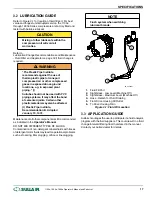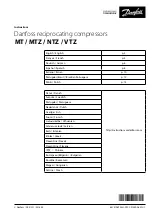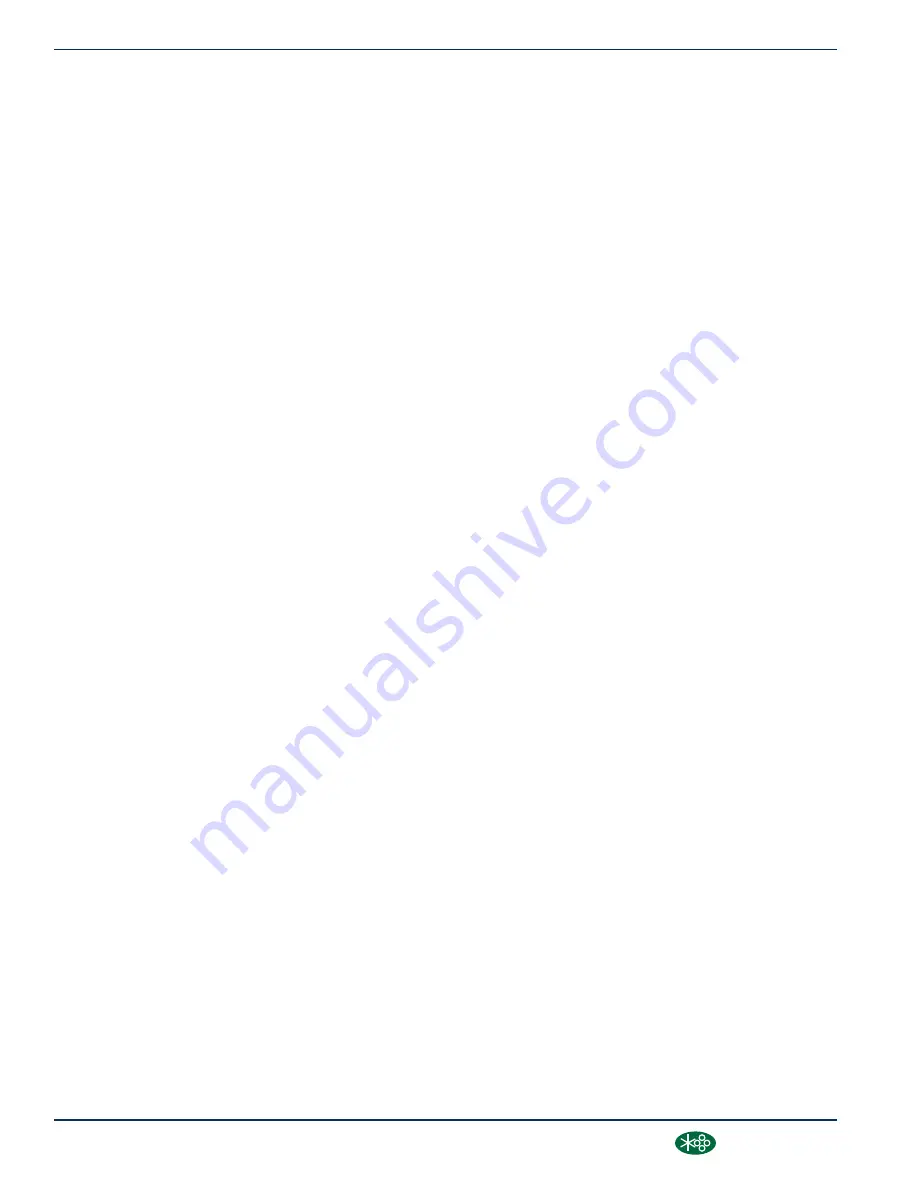
D. Flow-limiting valves are listed by pipe size and flow-
rated. Select appropriate valves accordingly, in
accordance with their manufacturer's
recommendations.
E. DO NOT use air tools that are rated below the
maximum rating of the compressor. Select air tools,
air hoses, pipes, valves, filters and other fittings
accordingly. DO NOT exceed manufacturer's rated
safe operating pressures for these items.
F. Secure all hose connections by wire, chain or other
suitable retaining device to prevent tools or hose ends
from being accidentally disconnected and expelled.
G. Open fluid filler cap only when compressor is not
running and is not pressurized. Shut down the
compressor and bleed the receiver tank to zero
internal pressure before removing the cap.
H. Vent all internal pressure prior to opening any line,
fitting, hose, valve, drain plug, connection or other
component, such as filters and line oilers, and before
attempting to refill optional air line anti-icer systems
with antifreeze compound.
I. Keep personnel out of line with and away from the
discharge opening of hoses or tools or other points of
compressed air discharge.
J. DO NOT use air at pressures higher than 2.1 bar for
cleaning purposes, and then only with effective chip
guarding and personal protective equipment per
OSHA Standard 29 CFR 1910.242 (b) and/or any
applicable Federal, State, and Local codes, standards
and regulations.
K. DO NOT engage in horseplay with air hoses as death
or serious injury may result.
1.4 FIRE AND EXPLOSION
A. Clean up spills of lubricant or other combustible
substances immediately, if such spills occur.
B. Shut off the compressor and allow it to cool. Then keep
sparks, flames and other sources of ignition away and
DO NOT permit smoking in the vicinity when checking
or adding lubricant or when refilling air line anti-icer
systems with antifreeze compound.
C. DO NOT permit fluids, including air line anti-icer
system antifreeze compound or fluid film, to
accumulate on, under or around acoustical material,
or on any external surfaces of the air compressor.
Wipe down using an aqueous industrial cleaner or
steam clean as required. If necessary, remove
acoustical material, clean all surfaces and then
replace acoustical material. Any acoustical material
with a protective covering that has been torn or
punctured should be replaced immediately to prevent
accumulation of liquids or fluid film within the material.
DO NOT use flammable solvents for cleaning
purposes.
D. Disconnect and lock out all power at source prior to
attempting any repairs or cleaning of the compressor
or of the inside of the enclosure, if any.
E. Keep electrical wiring, including all terminals and
pressure connectors in good condition. Replace any
wiring that has cracked, cut, abraded or otherwise
degraded insulation, or terminals that are worn,
discolored or corroded. Keep all terminals and
pressure connectors clean and tight.
F. Keep grounded and/or conductive objects such as
tools away from exposed live electrical parts such as
terminals to avoid arcing which might serve as a
source of ignition.
G. Remove any acoustical material or other material that
may be damaged by heat or that may support
combustion and is in close proximity, prior to
attempting weld repairs.
H. Keep suitable fully charged Class BC or ABC fire
extinguisher or extinguishers nearby when servicing
and operating the compressor.
I. Keep oily rags, trash, leaves, litter or other
combustibles out of and away from the compressor.
J. DO NOT operate the compressor without proper flow
of cooling air or water or with inadequate flow of
lubricant or with degraded lubricant.
K. DO NOT attempt to operate the compressor in any
classification of hazardous environment unless the
compressor has been specially designed and
manufactured for that duty.
1.5 MOVING PARTS
A. Keep hands, arms and other parts of the body and also
clothing away from couplings, fans and other moving
parts.
B. DO NOT attempt to operate the compressor with the
fan, coupling or other guards removed.
C. Wear snug-fitting clothing and confine long hair when
working around this compressor, especially when
exposed to hot or moving parts.
D. Keep access doors, if any, closed except when
making repairs or adjustments.
E. Make sure all personnel are out of and/or clear of the
compressor prior to attempting to start or operate it.
F. Disconnect and lock out all power at source and verify
at the compressor that all circuits are de-energized to
minimize the possibility of accidental start-up, or
operation, prior to attempting repairs or adjustments.
This is especially important when compressors are
remotely controlled.
G. Keep hands, feet, floors, controls and walking
surfaces clean and free of fluid, water or other liquids
to minimize the possibility of slips and falls.
SECTION 1
2
1100e, 1500e, 1800e Operator’s Manual and Parts List
®
SULLAIR
®
Summary of Contents for 1107e
Page 101: ...THIS PAGE INTENTIONALLY LEFT BLANK...


